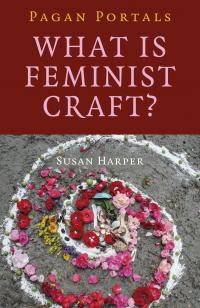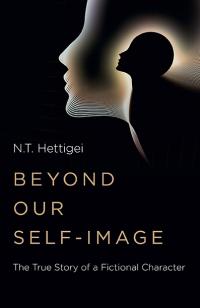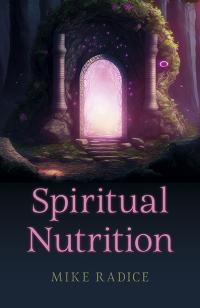
Recently, a mythologist friend of mine shared a video by Venezuelan-American television personality Jason Silva. Silva describes himself as a “wonder junkie” and “performance philosopher”, and he produces short, sermon-like videos in the style of Rob Bell’s NOOMA series. My friend specifically took issue with his “How Beauty Can Heal Us” segment: https://www.youtube.com/watch?v=2W6wJniitTU. I am not generally a fan of sermon-style anything, but I hunkered down and watched the video.
My main issue with the video is that Silva uses the terms “beauty” and “aesthetic” interchangeably. The Merriam-Webster dictionary defines beauty as the “quality or aggregate of qualities in a person or thing that gives pleasure to the senses or pleasurably exalts the mind or spirit”, while it defines aesthetic as “responsive to or appreciative of what is pleasurable to the senses”. Both definitions include language about the senses, but beauty also carries the idea that something can exalt the mind or spirit independently of the senses.
Why is this difference important? Most of Silva’s examples of beauty are about seeing and hearing. From culture to culture, we each have different dominant ideologies of what makes something “beautiful”, so relying on our senses to tell us what is beautiful reduces beauty to a subjective interpretation based on our own cultural preferences.
Relegating beauty to the realm of our senses neglects the idea that beauty comes from what we are rather than how we look or are perceived by others. Our stories are filled with examples of beauty as
an intrinsic quality. In the prologue scene from the 1991 Disney film, “Beauty and the Beast”, the prince disrespects a woman because he considers her ugly, “Repulsed by her haggard appearance, the
Prince sneered at the gift and turned the old woman away, but she warned him not to be deceived by appearances, for Beauty is found within.” Folklore is full of examples of things not being what they
seem: Tam Lin, David the shepherd boy, The Wedding of Sir Gawain and Dame Ragnelle, and more. These tales tell us that we will find truth if we focus on a person’s character rather than the
appearance that they present to us. In A Wrinkle in Time, Meg tries to explain appearances to Aunt Beast, whose species lacks the sense of sight:
“They have told us that our atmosphere is what they call opaque, so that the stars are not visible, and then they were surprised that we know stars, that we know their music and the movements of their dance far better than beings like you who spend hours studying them through what you call telescopes. We do not understand what this means, to see.”“Well, it’s what things look like,” Meg said helplessly.
“We do not know what things look like, as you say,” the beast said. “We know what things are like. It must be very limiting, this seeing” (L’Engle 199-200).
We are often told to trust the evidence of our own eyes, and we speak about “seeing” the truth. However, we only have to look at magic tricks and illusions to realize that our eyes are easily confounded. Surely, beauty must go deeper than the limits of our human senses.
A Wrinkle in Time contains a side story arc about Meg learning to see beauty in how things are rather than how they look. When she first meets Mrs Whatsit, for example, she mistakes her
for a tramp:
The age or sex was impossible to tell, for it was completely bundled up in clothes. Several scarves of assorted colors were tied about the head, and a man's felt hat perched atop. A shocking pink stole was knotted about a rough overcoat, and black rubber boots covered the feet (L’Engle 21-22).
Mrs Whatsit does not appear to Meg as a glorious figure with perfect skin and hair, and neither does she present as a paragon of virtue. Rather, the reason there were rumors of a tramp in town is because Mrs Whatsit stole the neighbor’s sheets. However, Meg receives the first hint that there is more to this old woman when Mrs Whatsit transforms on Uriel:
Her plump little body began to shimmer, to quiver, to shift. The wild colors of her clothes became muted, whitened. The pudding-bag shape stretched, lengthened, merged. And suddenly before the children was something more beautiful than any Meg had even imagined, and the beauty lay in far more than the outward description (L’Engle 73).
L’Engle explicitly states that the beauty of Mrs Whatsit cannot be described by telling us what she looked like. Throughout the book, it is Mrs Whatsit’s actions that give her beauty rather than her appearance. For instance, when the Happy Medium reveals that Mrs Whatsit gave up her life as a star to fight the darkness, Meg realizes the true beauty of Mrs Whatsit:
Even though she was used to Mrs Whatsit’s odd getup (and the very oddness of it was what made her seem so comforting), she realized with a fresh shock that it was not Mrs Whatsit herself that she was seeing at all. The complete and true Mrs Whatsit, Meg realized, was beyond human understanding. What she saw was only the game Mrs Whatsit was playing...it was only the tiniest facet of all the things Mrs Whatsit could be (L’Engle 104).
If Meg had only looked at Mrs Whatsit’s outward appearance, she probably would never have bothered to learn Mrs Whatsit’s story. The danger of conceiving beauty as aesthetic is that if we don’t like the way someone looks, we may be tempted to simply discard them and their story in favor of someone more pleasing to the eye.
The idea that beauty is aesthetic is tremendously damaging. There is a notion floating around our culture that truth is in appearances. There is also a notion that if we are truly beautiful inside, that beauty will be visible to others. These notions collided in the 2018 film adaptation of A Wrinkle in Time and completely changed the appearance and behavior of Mrs Whatsit. She went from a short, round, unkempt old woman to a tall, thin fashion plate with long red hair. In addition, she appears visibly exasperated with Meg’s inability to believe in the events that are unfolding, even telling Charles Wallace that she’s not sure what Charles Wallace sees in Meg. By our cultural standards, this version of Mrs Whatsit adheres to our standards of external beauty, but is she beautiful on the inside? She is no longer a comforting presence to Meg, but instead becomes another nagging voice that Meg isn’t good enough. How we internalize this superficial definition of beauty can be seen in the self-esteem problems and eating disorders that often manifest at puberty. How do middle school children see beauty within themselves if they are overweight, or have terrible acne, or don’t dress like other children? How do you tell a child that true beauty is within if our culture believes that beauty looks like a supermodel?
In pop culture usage, the word “Goddess” generally evokes images of Aphrodite or refers to abilities in bed. However, the Maiden/Mother/Crone trinity places elderly women, even or especially
those as disheveled and grey as Mrs Whatsit, alongside the two other figures with equal importance. The “hag” is as much a goddess as any of our other figures of womanhood. Our challenge is to
learn to see past what our culture tells us is beautiful and look into the hearts of people rather than their faces and bodies.
References
https://www.thisisjasonsilva.com/
L'Engle, Madeleine. A Wrinkle in Time. Square Fish, 2010.
Categories:
0 comments on this article






